Rich array of Calais 'Jungle' characters remembered
- Published
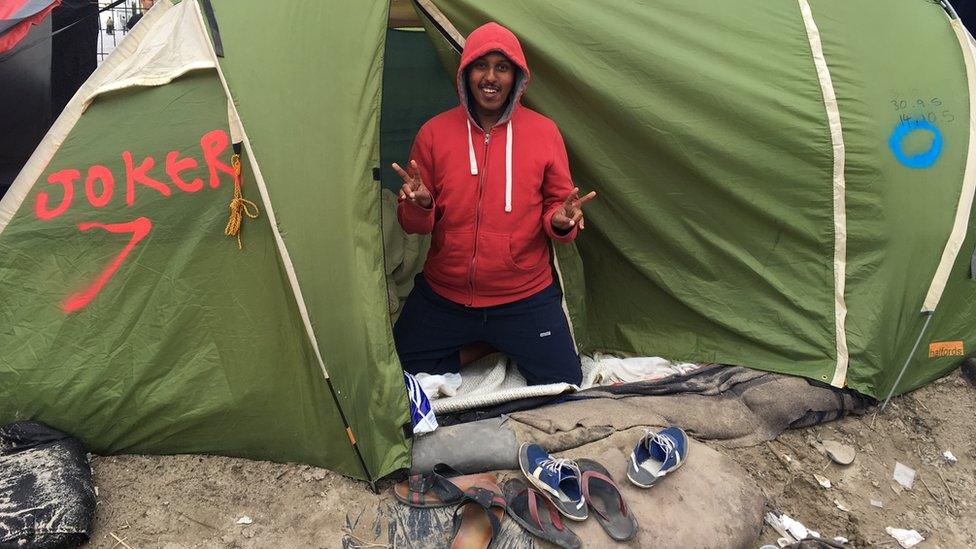
Abdulla, the Eritrean joker, was last seen heading for the German border
The French have a saying for when day turns to night. They call it "l'heure entre le chien et le loup" - "the hour between the dog and the wolf".
It's about working out who you can and can't trust in the twilight.
And that's the time when you had to have your wits about you in the "Jungle" camp in Calais - when aid workers left for the day, in the darkening maze of tents and shacks, when the always-vigilant faces of the migrants were lit only by the flickering of campfire flame.
The night before the closure of the camp was tense, with clashes between migrants throwing stones at police who, in return, fired tear gas and smoke grenades.
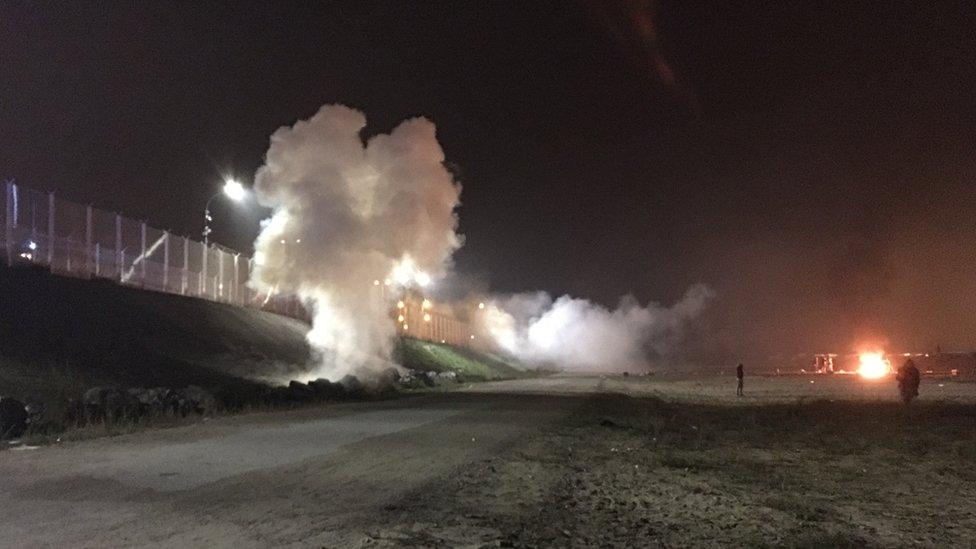
Smoke grenades were fired by the police ahead of their operation to dismantle the Jungle

Fires at the site of the camp have burned throughout the clearance operation
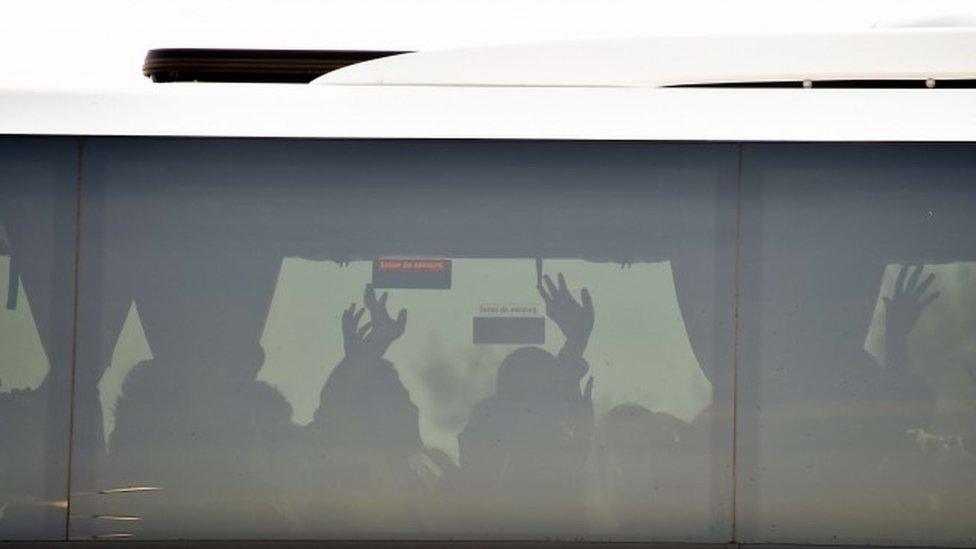
Many of the occupants of the Jungle have been taken away by bus in the course of the week
I watched a reporter at the edge of camp become hysterical and race instinctually into the shadows between tents screaming, "He's got my phone"!
The security protection called her to return but she kept running after an iPhone 6, by then firmly secured in the swift hands of a hooded thief.
That was the fifth time I had seen a mobile snatched from a journalist or, often, somebody there just to help.
If they were lucky, they might see their phone again later at the camp's "night market", where people sometimes bought their own phones back after haggling with the thief who took it.

What was the Jungle?

Ferry terminal
Migrant camp
Security fence
CALAIS
Eurotunnel
Migrant camp Oct 2016
Ferry
terminal
Area cleared
in early 2016
Security fence
Camp
Camp near the port of Calais and close to the 31-mile (50-km) Channel Tunnel
Officially about 7,000 migrants lived in the camp. The Help Refugees agency said the final population ahead of its demolition was 8,143
Many migrants attempted to hide in cargo vehicles entering the Channel Tunnel
The area was hit by protests from both locals and truck operators

It was difficult to ignore, despite the good intentions of aid workers, the kind of raw and unpalatable facts of Jungle life.
Helen, a 15-year-old Eritrean, crossed the Sahara Desert and took a smugglers' boat from Libya. She told me she felt more vulnerable in Calais than she had anywhere else, that her friend had been raped and that she had learned to think and walk fast, brushing off grabbing hands.
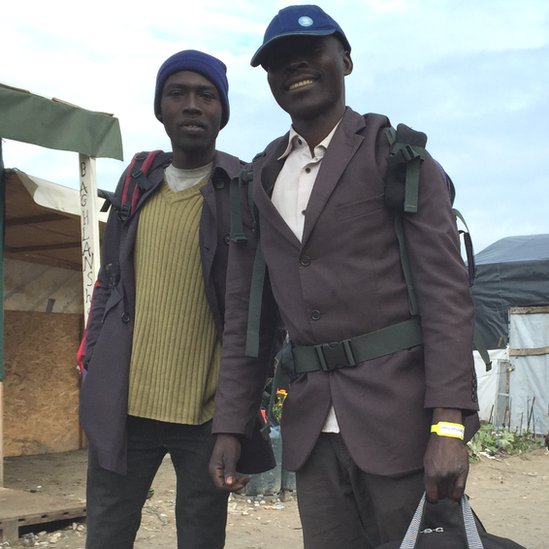
Abdul, (right), was the smartest man in the camp
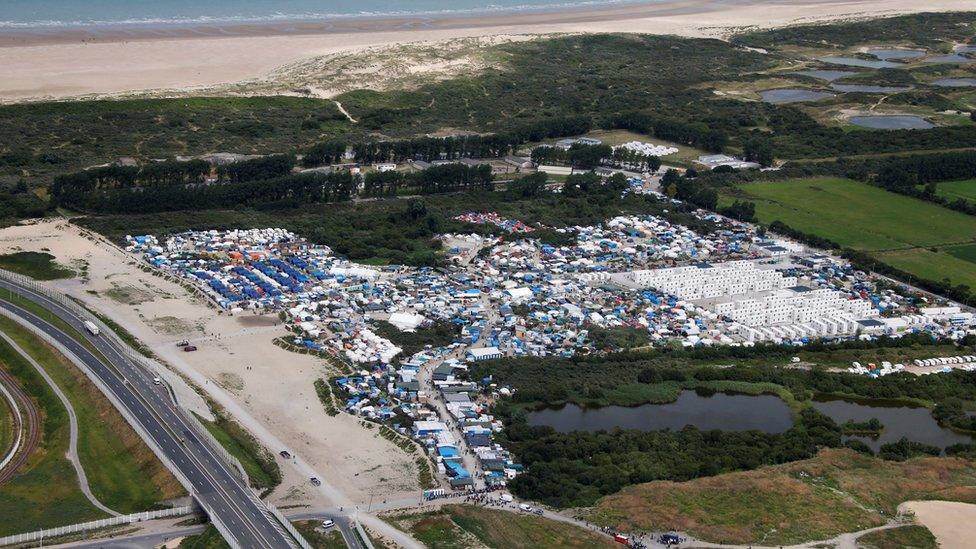
The jungle was a sight, and a scent, that you cannot forget
I have spent two years back and forth in the Jungle, witnessing the Jekyll and Hyde personality of the place, and the subsequent struggle of migrants, aid workers and journalists to paint an accurate, humane but truthful picture.
From a few dozen tents on a dune that had been a dumping ground for chemical waste, I saw the transformation into a bizarrely functioning small town essentially, with a population of 9,000 plus. The jungle was a sight, and a scent, that you cannot forget.
Many characters stick in my mind.
Stylish Adbul, the smartest man in the Jungle, the only man I ever saw there wearing a suit. You could spot him a mile off as he queued for his bus, a proud Sudanese man, brown suit barely creased, his old shoes polished to a shine.
Charismatic Abdulla, 27, an Eritrean with five languages, would translate for charity workers by day and attempt to stow away at night. At demolition day, he was nowhere.
"He's run off, somewhere towards Germany," his friends laughed. "He'll never give up on his dream."
Read more on this story:
"The man in the chair" was an Ethiopian who sat smiling in the same spot every day. He would say hello as we filmed nearby. Until one day, when he jumped from his spot with a rock, threatening to crush my skull if I didn't delete the footage. Footage deleted. He sat back down and resumed smiling.
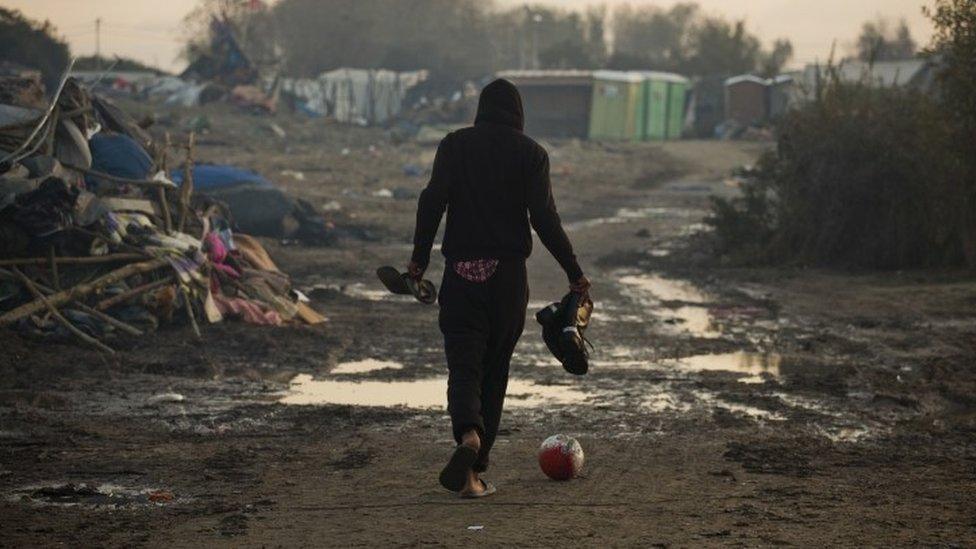
The bulldozers have now moved in
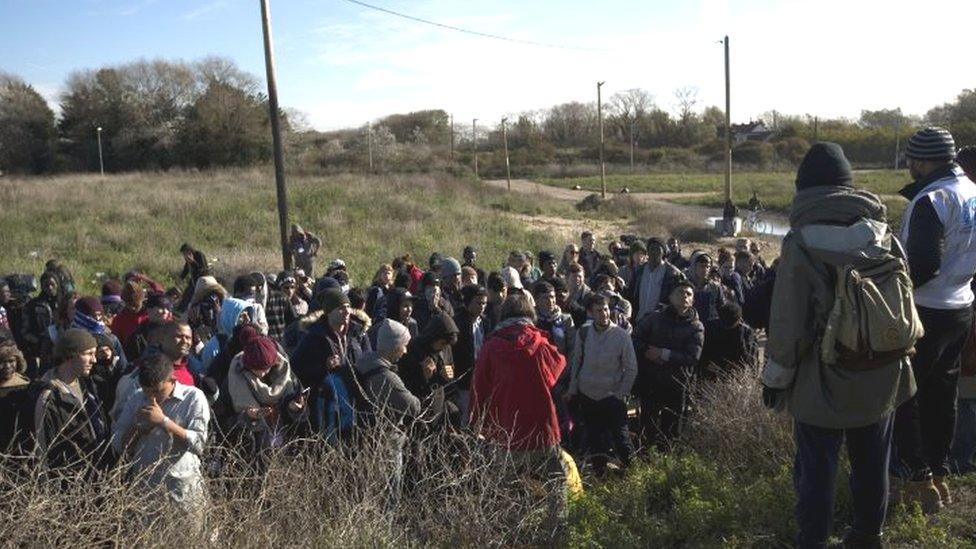
Some of the inhabitants of the Jungle endured as much trauma in the camp as they did on the hazardous journeys getting there
Robyn, a teenage aid worker from Norwich, who had dropped out of an arts degree to help, admitted this experience had affected her so deeply, she couldn't return to life in the UK. "Where will we see you next?" I ask. "Probably another migrant camp in another part of the world."
And affable Asif, a 37-year-old Afghan, who unlike the thousands with their El Doradic dreams of England, had made it… and lived illegally in London for three years, hated it, and stowed away - back to Calais.
"I was desperate to come back…" he told me, "So I jumped on the back of a lorry from Dover to Calais two weeks ago, and came back to where I started. I think I may be the first to try that."
These are ghosts of the Jungle now.
Those with seaside houses on the Opal coast, and unasked-for front rows seats to the dramas of the camp, talk of one day being able to sell their houses again.
They look forward to living without a high fence or barrier, and of not being afraid anymore to leave the house in the hour between the dog and the wolf.
And you can hear the full story of Calais - the last days in the Jungle on Assignment on BBC World Service on Thursday 3 November.
A note on terminology: The BBC uses the term migrant to refer to all people on the move who have yet to complete the legal process of claiming asylum. This group includes people fleeing war-torn countries such as Syria, who are likely to be granted refugee status, as well as people who are seeking jobs and better lives, who governments are likely to rule are economic migrants.